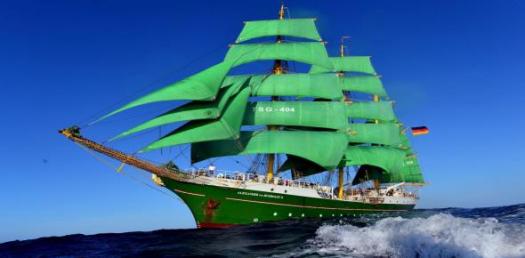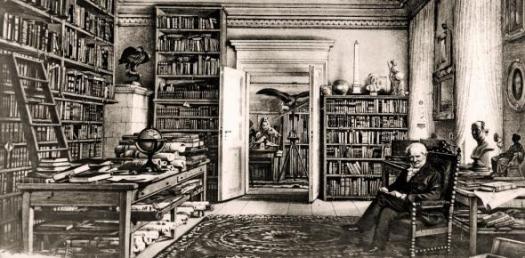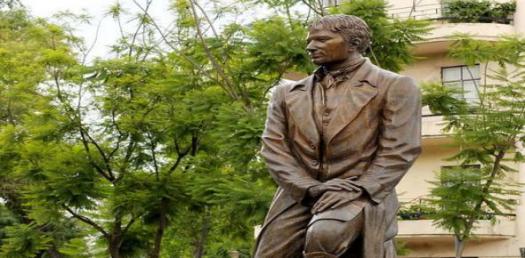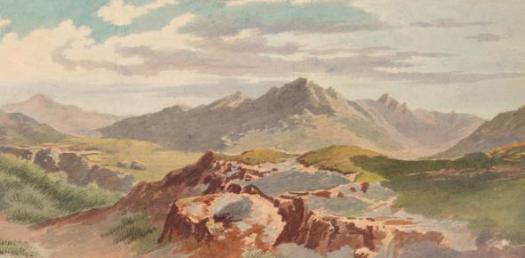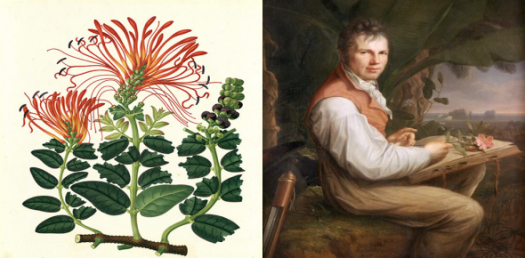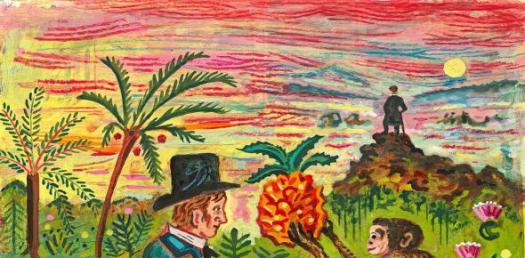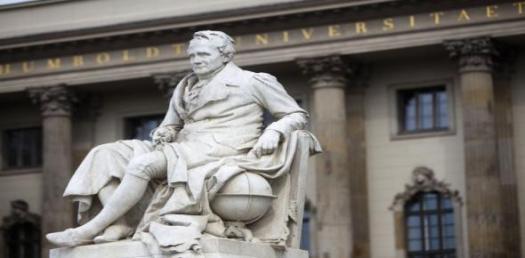Scientific Works By Alexander Von Humboldt! Quiz

Do you think you know all there is about the scientific life and works of Alexander Von Humboldt? If yes, why not try taking this fascinating quiz put together to test how great a science historian you may be.
Do enjoy!
- 1.
The major fields of research and discovery of Alexander Von Humboldt includes all the following except?
- A.
Biogeography
- B.
Marine vegetation
- C.
Astrophysics
- D.
Mining and solid minerals
Correct Answer
C. AstrophysicsExplanation
Alexander Von Humboldt was a renowned naturalist and explorer who made significant contributions to various fields of research and discovery. He is known for his work in biogeography, studying the distribution of plants and animals in different regions. He also extensively studied marine vegetation, examining the plant life in oceans and seas. Additionally, he had a strong interest in mining and solid minerals, conducting research on geological formations and mineral resources. However, astrophysics, the study of celestial objects and phenomena, is not listed as one of the major fields of research and discovery for Alexander Von Humboldt.Rate this question:
-
- 2.
What was the major source of fund for Alexander Von Humboldt scientific research expedition?
- A.
His trust fund
- B.
The crown
- C.
His mother's inheritance
- D.
The funding by the Duke of Brunswick
Correct Answer
C. His mother's inheritanceExplanation
Alexander Von Humboldt's major source of funding for his scientific research expedition was his mother's inheritance. This suggests that he received a significant amount of money from his mother's estate, which he used to finance his expedition. This inheritance likely provided him with the necessary resources to carry out his research and exploration endeavors.Rate this question:
-
- 3.
In 1800 and 1831, Alexander Von Humboldt made a critical discovery on the environment. What was that discovery?
- A.
How plants feed themselves and produce their foods
- B.
The causes of night and day
- C.
The tipping effect of a possible volcanism
- D.
The phenomenon of climate change and as caused by humans through observation generated from travels
Correct Answer
D. The phenomenon of climate change and as caused by humans through observation generated from travelsExplanation
Alexander Von Humboldt made a critical discovery on the phenomenon of climate change and its causes by humans through observation generated from his travels. He observed and documented the impact of human activities on the environment, including deforestation and industrialization, which led to changes in climate patterns. This discovery highlighted the importance of human actions in shaping the Earth's climate and laid the foundation for modern understanding of climate change.Rate this question:
-
- 4.
Humboldt and his travel companion, Bonpland while ascending the mount of Chimborazo contracted mountain infections and sickness. What did Alexander Von Humboldt attribute mountain sickness to?
- A.
The irritations caused by mountain vegetation
- B.
The lack of oxygen
- C.
Excessively cold environment
- D.
The scary height
Correct Answer
B. The lack of oxygenExplanation
Alexander Von Humboldt attributed mountain sickness to the lack of oxygen.Rate this question:
-
- 5.
What laid the foundation for the science comparative climatology amongst the works and researches of Humboldt?
- A.
Kosmos
- B.
His treatise titled Mineralogische Beobachtungen über einige Basalte am Rhein
- C.
His weather maps on Isotherms and Isobars
- D.
Komodos
Correct Answer
C. His weather maps on Isotherms and IsobarsExplanation
Humboldt's weather maps on Isotherms and Isobars played a crucial role in laying the foundation for the science of comparative climatology. These maps allowed for the visual representation and analysis of temperature and pressure patterns across different regions. By studying the distribution of these weather elements, scientists were able to compare and understand climatic variations in different parts of the world. This work by Humboldt provided a significant contribution to the development of comparative climatology as a scientific discipline.Rate this question:
-
- 6.
What interesting conclusion did Humboldt derive from his study of the Andean volcanoes?
- A.
Factors that contribute to volcanic eruptions
- B.
That beneath the earth is boiling magma anticipating factors to be erupted
- C.
The roles played by eruptive factors and metamorphosis in the development of the earth crust
- D.
D. The poisonous nature of volcano gases when inhaled
Correct Answer
C. The roles played by eruptive factors and metamorphosis in the development of the earth crustExplanation
Humboldt derived the interesting conclusion that the roles played by eruptive factors and metamorphosis are important in the development of the Earth's crust. This suggests that volcanic eruptions and geological processes such as metamorphosis have a significant impact on the formation and evolution of the Earth's crust.Rate this question:
-
- 7.
The conclusions made from Humboldt study of the Andean volcanoes disproved many hypothetical theories in history particularly one postulated by a neptunist. Who was that neptunist?
- A.
Louis Boltzmann
- B.
Charles Darwin
- C.
Johann Wolfgang
- D.
Abraham Gottlob Werner
Correct Answer
D. Abraham Gottlob WernerExplanation
Abraham Gottlob Werner was the neptunist whose theory was disproved by the conclusions made from Humboldt's study of the Andean volcanoes.Rate this question:
-
- 8.
When Humboldt sailed to England, he met a great mind who helped him in putting his research in perspective. Who this great mind?
- A.
Captain James Cook
- B.
Sir Joseph Banks
- C.
Georg Forster
- D.
Robert Hook
Correct Answer
B. Sir Joseph BanksExplanation
Sir Joseph Banks was a renowned British naturalist and botanist who played a significant role in the scientific community during the 18th century. He accompanied Captain James Cook on his voyage to the South Pacific and was responsible for documenting and collecting numerous plant specimens. Banks had a deep understanding of natural history and was well-connected with the scientific community in England. It is plausible that he provided valuable guidance and insights to Humboldt, helping him put his research into a broader perspective.Rate this question:
-
- 9.
The following fuelled the scientific friendship between Humboldt and the president of the Royal Society except?
- A.
They both shared similar scientific interest
- B.
They both were magnificent Voyagers who travelled far and wide
- C.
President of the Royal Society had some rare collections of specimens which fascinated Humboldt
- D.
The president of the royal society was a wealthy man willing to invest in crazy scientific breakthroughs
Correct Answer
D. The president of the royal society was a wealthy man willing to invest in crazy scientific breakthroughsExplanation
The correct answer is that the president of the Royal Society was a wealthy man willing to invest in crazy scientific breakthroughs. This answer is incorrect because it is stated in the question that the president of the Royal Society fueled the scientific friendship with Humboldt, and being a wealthy man willing to invest in crazy scientific breakthroughs would likely have been an attractive quality to Humboldt. Therefore, this answer does not fit the question's criteria for an exception.Rate this question:
-
- 10.
Humboldt was admitted into a class of great intellectuals and scientist called the Weimar Classicism in what year?
- A.
1800
- B.
1794
- C.
1798
- D.
1797
Correct Answer
B. 1794Explanation
Humboldt was admitted into the class of great intellectuals and scientists called the Weimar Classicism in the year 1794.Rate this question:
-
Quiz Review Timeline +
Our quizzes are rigorously reviewed, monitored and continuously updated by our expert board to maintain accuracy, relevance, and timeliness.
-
Current Version
-
May 21, 2023Quiz Edited by
ProProfs Editorial Team -
May 19, 2019Quiz Created by
AdewumiKoju
 Back to top
Back to top



